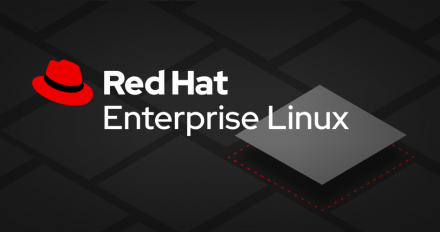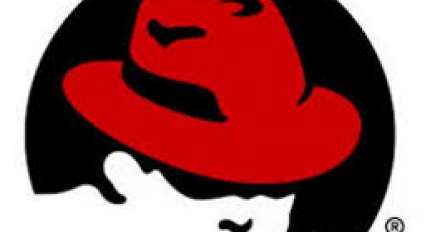
Making the Operation of Code More Transparent and Obvious with SystemTap


Reviewing source code can be helpful in understanding how code works, but the static view may not give you a complete picture. The paths taken through code are heavily data dependent. Learn how to use Systemtap and debuginfo to dig into the Ruby interpreter internals on Red Hat Enterprise Linux 7.

Red Hat Enterprise Linux 7.5 is now live. Red Hat’s multi-architecture initiative is a new milestone: all supported architectures x86_64, PowerPC Big/Little Endian, s390x, and now 64-bit Arm and IBM POWER9 were simultaneously released. The Cockpit Web GUI can be used for complex admin tasks without using the CLI.

Have you ever thought about having your own cloud environment? A local cloud is one of the best things you can do to better understand all the gears that run inside a highly productive environment. How do I know that? I've done it! And I'm ready to show you how I did, and how you can do it.

This article is for people interested in long-term Linux kernel maintenance. It introduces you to tools that can help keep the binary interfaces between the kernel and its loadable modules stable during the entire lifetime of a supposedly stable kernel, while code is modified.

Usando JQuery/LightBox dentro do Portlet no JBoss EPP 5.0

In this session, Mark Wagner reviews enhancements in Red Hat Enterprise Linux 6 and show attendees how to take advantage of them in their environments. Mark uses test results from Red Hat's performance lab to highlight the various differences, advantages, and tradeoffs for many technologies, including Kernel-based Virtual Machine (KVM) virtualization technology, 10Gbit Ethernet, Infiniband, FCoE, Packet Flow Control, and RDMA. Mark also presents guidelines and tools for planning and tuning network configurations for low latency and high throughput. He covers the differences between tuning for baremetal, a KVM guest, a Red Hat Storage file system, and NFS. He also touches upon some tricks developers can use when writing network-based applications.

Key features, themes, and objectives of Red Hat Enterprise Linux 6, in a talk delivered by Engineering Vice President Tim Burke. Find out what's new, what's improved, and what is most important in the newest release of the Red Hat operating system.

Red Hat® Enterprise Linux® has a kernel feature called control groups, or cgroups. This feature allows you to allocate resources–such as CPU time, system memory, network bandwidth, or a combination of these resources–among user-defined processes. This feature is also used to implement Linux containers. See how system administrators can gain fine-grained control over system resources and divide them among tasks and users, thus increasing overall system efficiency.

ING Services Poland needed to reduce IT architecture maintenance costs and accelerate delivery of platforms on which the business applications for clients from the ING Group are built. After implementing Red Hat Enterprise Linux and Red Hat JBoss Middleware technologies, the company has met its objectives to speed up the applications delivery from weeks to days, to reduce costs of services to 1/3 and has managed to win new internal clients.

Jim Whitehurst, Red Hat CEO and chairman of the board, gives an overview of the advantages of Red Hat Enterprise Linux 6, and explains why this award-winning version brings even more to the technology table. Red Hat Enterprise Linux 6 is more reliable than Windows, more open than Oracle, and more comprehensive than VMware. It is the industry standard, used by everyone from the DoD to Wall Street, and everywhere from standard desktops to the cloud.

Red Hat® Enterprise Linux® Atomic Host is a small footprint kernel optimized for running containers. This video demonstrates the deployment of an HPC application (Linpack) across multiple environments and discusses the benefits of running HPC applications in containers.

Red Hat® JBoss® Enterprise Application Platform (EAP) allows you to quickly deploy JavaEE-compliant applications on top of Red Hat Enterprise Linux. By utilizing Linux containers you can create a consistent environment for running EAP that will include all necessary application dependencies, like OpenJDK and any Java applications that you need to deploy or distribute. This demonstration provides step-by-step instructions on how to set up such configurations.

When is free Linux more expensive? When you have an enterprise to run. Every IT organization is looking for ways to be more efficient. What you may not realize is that pieces of your infrastructure like community Linux are actually making your job more difficult. Red Hat can help. This video demonstrates how standardizing on Red Hat Enterprise Linux can save your organization money and make you more productive and more efficient.

In this demo, Scott Collier shows how to use Docker containers (the contents of an image and its features) to cat out contents of /etc/host, launch a web server, and bindmounting log files to see activity on host machines.

Mission-critical RAS capabilities on Intel hardware. Applications that run best on Red Hat Enterprise Linux. Scalability, flexibility, reliability. All these factors contribute to the highest levels of performance made possible with Red Hat Enterprise Linux 6. Hear our partners--IBM, HP, Dell, BMC, and more--explain why.

Join Red Hat on May 15, 2012 to celebrate 10 years of Red Hat Enterprise Linux

In this session from the 2012 Red Hat Summit, Andrew Cathrow, product manager, and Chuck Dubuque, product marketing manager for Red Hat Enterprise Virtualization. They discuss Red Hat virtualization, including Red Hat Enterprise Virtualization 3, and the past, present, and future of virtualization technology. Dubuque discusses the current environment, including virtualization competitor VMware, and the opportunity that a second source for virtualization--a open standards source--offers. He then offers details about Red Hat Enterprise Virtualization, including information about management features, hypervisor technology, specVIRT success, and opportunities for cost savings. Cathow then joins in to talk about development of Red Hat Enterprise Virtualization 3 and 3.1, and the growth of the communities surrounding it, including Fedora and oVirt. Cathow highlights features and changes in Red Hat Enteprise Virtualization, including: - OpenJDK requirement for proprietary Oracle JRE is eliminated. - Support for Jasper 4.7 and two new directory servers - Scalability to 160 Virtual CPUs per VM and 2T virtual RAM per VM - enhanced physical to virtual migration (P2V) - Live snapshots - Shared disks - SDK availability - new top-level manager for managing disks - direct LUN access Cathow details many other system and version features, including a overview of key technologies for future versions of Red Hat Enterprise Virtualization and Red Hat Enterprise Linux. He also intermittantly takes questions from the audience. Watch more 2012 Red Hat Summit and JBoss World videos from Red Hat: http://www.youtube.com/playlist?list=PL995CD1141C3330D5&feature=plcp

Ever wonder how great features make it from the community into enterprise-ready technology like Red Hat(R) Enterprise Linu(R)? Fedora Project Leader Paul Friends explains how projects started upstream gain in popularity and maturity, are hardened and tested, and eventually make their way to enterprise solutions. Learn more about the Fedora Project: http://fedoraproject.org/

In this two-part session, Mark Heslin will review the various concepts, components, and configuration options available for integrating the mission-critical readiness of Red Hat Enterprise Linux 6 into Active Directory domain environments. Emphasis will be placed on understanding the pros and cons of each approach, best practices, and guidelines for selecting the best configuration.

Red Hat Enterprise Linux transformed enterprise IT, and dramatically changed the software industry forever. By combining the open source development model with a customer-centric subscription based business model, Red Hat gave enterprise customers a way to leverage the value of open source in a way that made sense for them, and that spurred the adoption of Linux across the enterprise. But it wasn't easy. There were doubts and obstacles to overcome, customers and partners to convince, and millions of developers to collaborate with. But with commitment and vision, it all just worked.

In this 'Best of' session at the 2012 Red Hat Summit and JBoss World, Tim Burke, vice president of Linux Engineering at Red Hat, describes feature enhancements in recently released versions of Red Hat Enterprise Linux. Burke then has his team of engineering development managers highlight their technology area and key initiatives. They also discuss emerging technologies targeted for delivery in future releases. Burke first gives a brief Red Hat Enterprise Linux life cycle overview, and an explanation of various themes within Linux development today. He then explores timeframes and Red Hat Enterprise Linux 7 feature possibilities and Fedora 18 enhancements. He then turns the session over to his teams, who present technology area highlights, including information about: - virtualization - kernel and virtual memory - hardware enablement - storage and volume management - filesystem and Gluster Watch Part 2 of this session video: http://www.youtube.com/watch?v=H-cDorXHO5U&list=PL995CD1141C3330D5&index=17&feature=plpp_video Watch more 2012 Red Hat Summit and JBoss World videos: http://www.youtube.com/playlist?list=PL995CD1141C3330D5&feature=plcp

Heidelberg's Global IT Director Mathias Berg explains how, with the help of Red Hat(R) Consulting, Heidelberg built an interactive customer portal using JBoss(R) Enterprise Portal Platform and migrated its proprietary application platform to JBoss Enterprise Application Platform. Find more Red Hat and JBoss customer success stories: http://www.redhat.com/customersuccess/

Is your SOA solution simple to develop, deploy, and manage? JBoss Enterprise SOA Platform is, and here are a few of the reasons why. Want more information about JBoss SOA? http://www.jboss.com/resources/soa/ http://www.jboss.com/products/platforms/soa/

With JBoss, your SOA solution comes from a large, open developer community. When your needs change, we listen. It's SOA built for your needs. Not ours. And that means you're in control. Find out more about JBoss SOA: http://www.jboss.com/resources/soa/ http://www.jboss.com/products/platforms/soa/